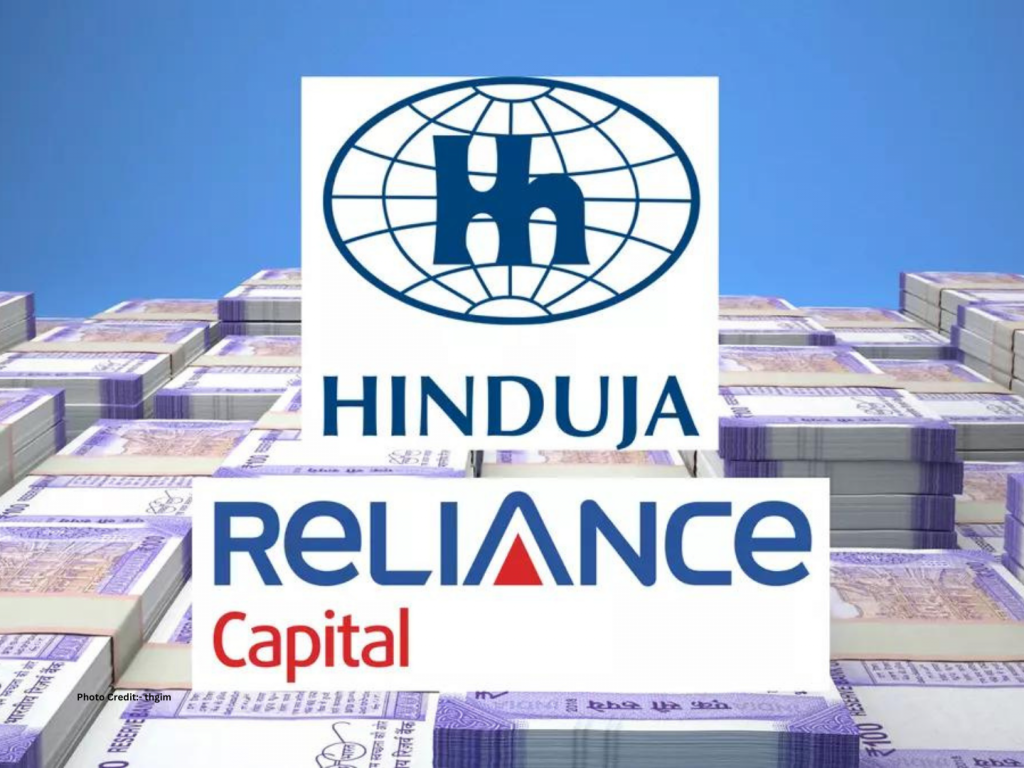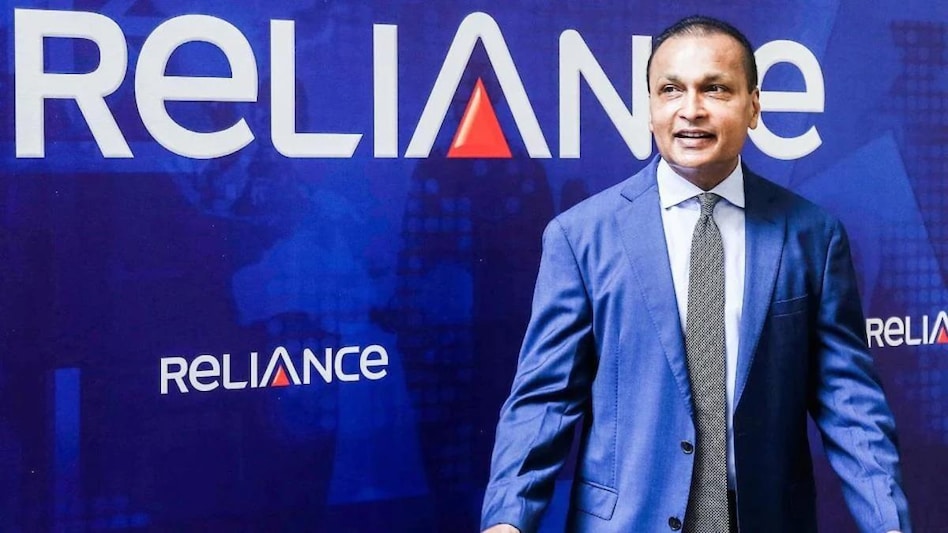Business
Hinduja Group To Raise ₹4,300 Crore Second Tranche To Seal Reliance Capital Deal. How A Top Financial Co Ended Up Bankrupt But Anticipates A Turnaround Via Anil Ambani’s Son, Jai Anmol.
Published
11 months agoon

The Hinduja Group is in advanced discussions to raise ₹4,300 crore—the second tranche of funding required to complete the acquisition of Anil Ambani’s Reliance Capital under the ongoing insolvency resolution process.
Earlier, in September, the group secured ₹3,000 crore in the first tranche through Barclays and 360 One, according to reports. However, the second tranche faced delays as it awaited approval from the Department for Promotion of Industry and Internal Trade (DPIIT), sources familiar with the matter revealed.
The creditors approved the Hinduja Group’s ₹9,650 crore resolution plan for Reliance Capital in July 2023 after the Reserve Bank of India intervened due to governance concerns and a staggering ₹40,000 crore debt default. To fund the acquisition, the group is deploying a mix of equity and debt financing, proposing to raise ₹7,300 crore through debt.
In a unique financing structure, IndusInd International Holdings (IIHL), a Hinduja entity, raised ₹3,000 crore in September by issuing non-convertible debentures (NCDs) with a high coupon rate of 14.50%. Interestingly, the second tranche, once finalized, will appear on Reliance Capital’s books. This ₹4,300 crore funding, also to be raised via NCDs facilitated by Barclays and 360 One, awaits the necessary regulatory nods.
Although the National Company Law Tribunal (NCLT) approved the resolution plan in February, IIHL requested a 90-day extension from May 27, 2024, to implement the plan. It further filed an application on July 30 for additional directions from the NCLT.

How a Financial Powerhouse Reliance Capital Fell to Bankruptcy
Once a financial giant with a market capitalization exceeding ₹70,000 crore—surpassing even HDFC—Reliance Capital was celebrated as one of India’s top financial institutions. However, its descent into insolvency was spearheaded by mismanagement and alleged wrongdoing.
At the heart of the company’s troubles were allegations of fund diversion within Reliance Home Finance Ltd. (RHFL), implicating former chairman Anil Ambani. According to a detailed 222-page order by SEBI, Ambani misused his position in the ADA Group to channel funds from RHFL as loans to related entities, resulting in a fraudulent scheme. This scandal led to a five-year ban on Ambani from the securities market and a penalty of ₹25 crore.
Adding to the financial strain, the Supreme Court overturned an ₹8,000 crore arbitral award in April 2024, initially granted to Reliance Infrastructure’s subsidiary Delhi Airport Metro Express Pvt. Ltd. (DAMEPL). The decision required DAMEPL to refund approximately ₹3,300 crore already received under the award.
Reliance Infrastructure clarified that this ruling did not impose direct liability on the company, emphasizing that DAMEPL operates as a separate entity. However, the cascading legal and financial challenges only worsened the group’s precarious position.
Here’s a timeline of how this financial titan of 2007 fell into bankruptcy.
2002: The Split of Reliance Industries
Following the death of Dhirubhai Ambani in 2002, Anil Ambani took charge of the financial services, power, and telecom businesses of Reliance Industries. The split from his brother Mukesh Ambani marked the beginning of his independent business journey.
2007: A Financial Powerhouse
By 2007, Reliance Capital was a crown jewel in Anil Ambani’s empire. Its market capitalization surpassed ₹70,000 crore, eclipsing HDFC, and Ambani confidently positioned the company among India’s top three financial institutions.
2008: The Global Financial Crisis and Aggressive Expansion
The 2008 financial crisis brought severe liquidity challenges for financial services firms worldwide. Despite the turmoil, the Anil Dhirubhai Ambani Group (ADAG) aggressively expanded its portfolio, making high-profile investments – a joint venture with Steven Spielberg’s DreamWorks and acquisitions like Global Cloud Xchange, Zapak, UTV Television, Pipavav Shipyard, and MTS Telecom.
However, these ambitious ventures, coupled with a significant push into infrastructure projects such as Reliance Power, strained the group’s finances. Poor timing and high leverage made matters worse, especially in sectors like telecom, where Reliance Communications (RCom) failed to adapt to the industry’s shift from CDMA to GSM technology.
2018: Signs of Trouble
By 2018, the cracks in Reliance Capital’s financial foundation were becoming evident. Credit rating agency CARE downgraded the company to default status, signaling deep financial distress. The failures of IL&FS and DHFL further tightened liquidity across the financial sector. Compounding the crisis, PwC refused to sign off on Reliance Capital’s FY19 balance sheet, citing governance issues.
2019: A Decline in Reputation
Anil Ambani’s financial troubles came to a head in 2019 when he declared bankruptcy before a UK court, a sharp contrast to his earlier status as one of India’s leading business magnates.
2021: Regulatory Intervention and Bankruptcy Proceedings
By 2021, Reliance Capital’s financial position had worsened significantly. Its key subsidiaries, Reliance Home Finance and Reliance Commercial Finance, defaulted on loans, primarily due to funds lent to related parties that themselves defaulted.
In November 2021, the Reserve Bank of India intervened, superseding the company’s board and initiating bankruptcy proceedings to protect stakeholders’ interests.

Anil Ambani’s Fall from Grace
Anil Ambani’s financial troubles have been years in the making. Once valued at $42 billion and ranked the sixth richest person globally in 2008, his fortunes sharply declined until in February 2020, he declared bankruptcy in a UK court, signaling the depth of his financial and legal challenges.
Anil Ambani’s journey began with notable highs. Following his father Dhirubhai Ambani’s stroke in 1986, Anil played a key role in managing Reliance’s financial dealings. After Dhirubhai’s passing in 2002, Anil and his elder brother Mukesh Ambani jointly led the sprawling Reliance conglomerate.
However, in 2005, a bitter sibling rivalry led to the division of the empire. Mukesh retained control of the core oil and petrochemical businesses, while Anil took charge of newer ventures like telecommunications, power, and financial services. Despite ambitious expansion plans, these ventures were largely financed through heavy borrowing—a strategy that would later prove detrimental.
Failed Ventures and Legal Battles
Anil Ambani’s forays into diverse sectors—ranging from infrastructure and defense to entertainment—often ended in disappointment.
For example his power sector deal (a mega gas-based power project in Dadri, Uttar Pradesh, was derailed when the Allahabad High Court quashed land acquisition in 2009). Again deals in entertainment ( Investments in Adlabs and a high-profile deal with Steven Spielberg’s DreamWorks failed to generate the expected returns).
Reliance Communications (RCom), once a promising telecom venture, was unable to adapt to the industry’s shift from CDMA to GSM. By 2019, it had amassed insurmountable debt and entered insolvency proceedings.
In 2019, the Supreme Court threatened to jail him after RCom failed to pay ₹550 crore to Ericsson AB’s Indian unit. Mukesh Ambani intervened, paying the amount and averting his brother’s imprisonment.
Three Chinese banks sued Anil in a London court over a $680 million loan default tied to RCom. Anil claimed he had issued a non-binding “personal comfort letter,” not a formal guarantee. The case remains unresolved.
The financial difficulties continued to mount for Anil Ambani’s businesses:
Reliance Capital: By 2021, the company defaulted on bonds worth ₹24,000 crore, leading to bankruptcy proceedings.
Reliance Infrastructure: Known for building Mumbai’s first metro line, the company missed bond payments while awaiting funds from asset sales.

Anil Ambani’s Son, Jai Anmol to the Rescue
Reliance Capital Limited (RCL) is currently looking better under the leadership of Anil Ambani’s sons, Jai Anmol and Jai Anshul Ambani. Jai Anmol, in particular, has emerged as a pivotal figure, striving to rebuild the company’s fortunes while carrying the weight of the Ambani legacy.
Jai Anmol’s journey into the business world began early. At just 18, he interned at Reliance Mutual Fund, gaining firsthand experience in the financial sector. By 2014, he formally joined the family business, marking the start of his professional career. In 2017, he was appointed Executive Director of Reliance Capital—a major milestone. He later joined the boards of Reliance Nippon and Reliance Home in 2018. However, in 2019, both Jai Anmol and his younger brother Jai Anshul stepped down from their roles at Reliance Infrastructure, signaling a shift in focus.
Jai Anmol’s personal life has also attracted significant attention. In a lavish ceremony held at Sea Wind, the iconic Ambani family residence in Mumbai, Jai Anmol married Khrisha Shah, the daughter of the late Nikunj Shah, former chairman of Nikunj Enterprises Limited.
Khrisha, a graduate of the London School of Economics with a degree in Social Policy and Development, is a successful entrepreneur in her own right. The wedding brought together prominent personalities from across India and solidified the couple’s standing in the business and social elite.
Building Wealth and a New Vision
At a young age, Jai Anmol has amassed an impressive net worth, estimated at $3.3 billion (₹20,000 crore). His love for luxury is evident in his enviable car collection, which includes a Lamborghini Gallardo and a Rolls-Royce Phantom.
However, the journey hasn’t been without challenges. In September 2024, the Securities and Exchange Board of India (SEBI) fined Jai Anmol ₹1 crore for lapses in due diligence while approving general-purpose corporate loans (GPCLs) in the case of Reliance Home Finance.


